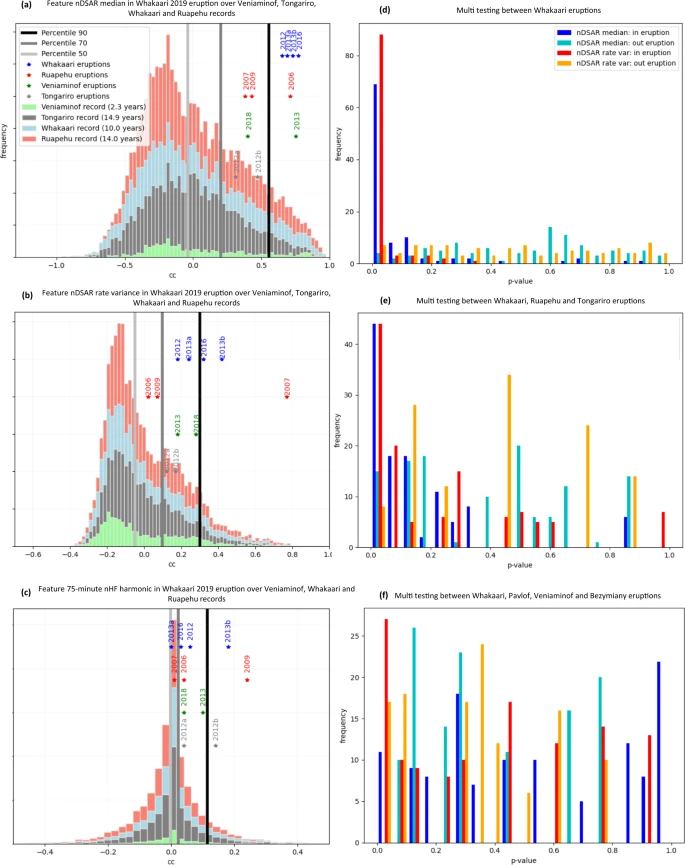Phys.org April 20, 2022
Even with real-time geophysical monitoring, forecasting sudden eruptions is difficult, because their precursors are hard to recognize and can vary between volcanoes. An international team of researchers (New Zealand, Belgium) has described a general seismic precursor signal for gas-driven eruptions, identified through correlation analysis of 18 well-recorded eruptions in New Zealand, Alaska, and Kamchatka. The precursor manifested in the displacement seismic amplitude ratio between medium (4.5–8 Hz) and high (8–16 Hz) frequency tremor bands, exhibited a characteristic rise in the days prior to eruptions. They interpreted this as formation of a hydrothermal seal that enables rapid pressurization of shallow groundwater. Applying this model to the 2019 eruption at Whakaari (New Zealand), they described pressurization of the system in the week before the eruption, and cascading seal failure in the 16 h prior to the explosion. Real-time monitoring for this precursor may improve short-term eruption warning systems at certain volcanoes…read more. Open Access TECHNICAL ARTICLE

Testing differentiability of potential precursors. Credit: Nature Communications volume 13, Article number: 2002 (2022)